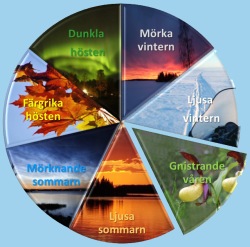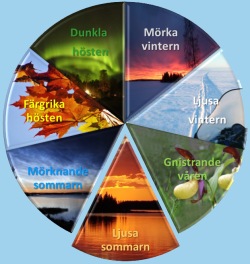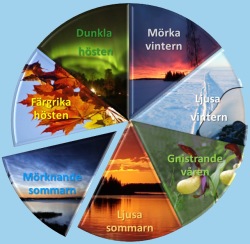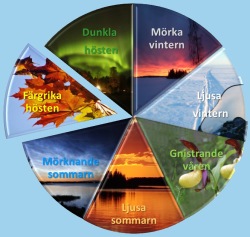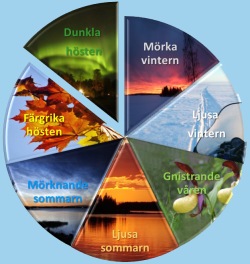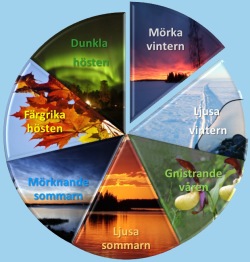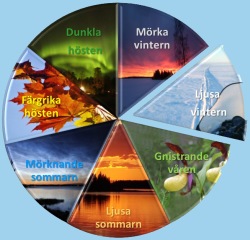

Lär dig Friluftsliv - under de 7 årstiderna

Vad är Friluftsliv?
In the Nordic countries (Denmark, Norway, Iceland, Sweden and Finland) we have an outdoor tradition called Friluftsliv - "Free Air Life", ” meaning a philosophical lifestyle based on experiences of the
freedom in nature and the spiritual connectedness with the landscape. It should not be confused with the more limited concepts of Outdoor Activities, Outdoor Life, or Outdoor Edication, although Friluftsliv involve all three concepts.
The essence of Friluftsliv is difficult to define. It is a concept that can be found among outdoor
people all over the world, but as a specific philosophy and the use of a special word for it is
unique for Nordic countries. Here Friluftsliv is deeply rooted in the soul of the people although far from everyone practices it.
Friluftsliv is closely dependent on the unwritten law of Allemansrätten (“every-ones-right”) in the nordic counttries, that allows everyone access to the land, even private property, but under certain reposibilities Read more about Allemansrätten here >>
Today, Friluftsliv has been divided into a sportified way of beeing in nature, where concuering and competing are the goas of being in nature, and also a mororized way of Friluftsliv, where traveling by snowmobile, quads, motor boats, waterscooters etc. are the main reason to be in nature.
In contrast to these activity-driven ways of being in nature, the more original Friluftsliv as a way of being in nature, as a pholosophy of interconnecting with the more-than-human-world, where sitting by the fire, and just being, relaxing and slowing down, is the main purpose if Friluftsliv. Here Friluftsliv is a biological, social, esthetic, spiritual and philosophical experience of closeness to a place, the landscape, and the more-than-human world. Although using different activities such as canoing, climbing, skiing, fishing, collecting, painting, etc., Friluftsliv is someting much more than just these outdoor activities.
Read more about the concept of Friluftsliv by the arcticle of Gelter 2000: Friluftsliv - The Scandinavian philosophy of outdoor life:
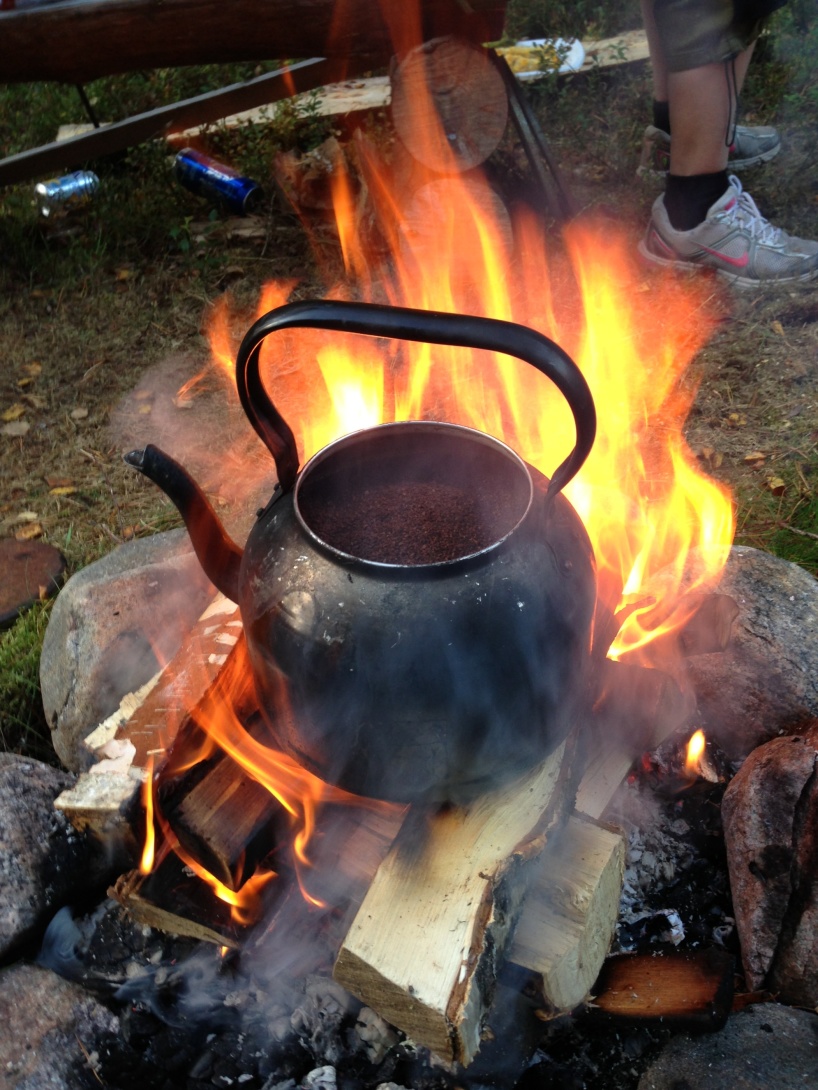
Vårt Sju årstiderna koncept med Friluftsliv
Friluftsliv kan genomföras under hela året och alla årstider där varje årstid ställer sina krav och förutsättningar på friluftslivet.
Nedan beskrivs därför Friluftsliv och de aktiviteter som Guide Natura erbjuder utifrån vårt De sju årstidernas koncept >>
Vårt fokus kring friluftsliv är inte aktiviteten i sig utan vi fokuserar fokuserar på naturkontakten, välbefinnandet, friluftslivet upplevelevärden, de sociala och filosofiska dimensionerna av friluftslivet. VI erbjuder inte adrenalinpumpande äventyr, det gör andra, utan vi fokuserar på "slow experiences" och soft adventures" som passar nybörjare, familjer och dig som vill koppla asv och få återhämtning, samtidigt som fu får lära dig både om Friluftsliv, naturen och din naturkontakt.
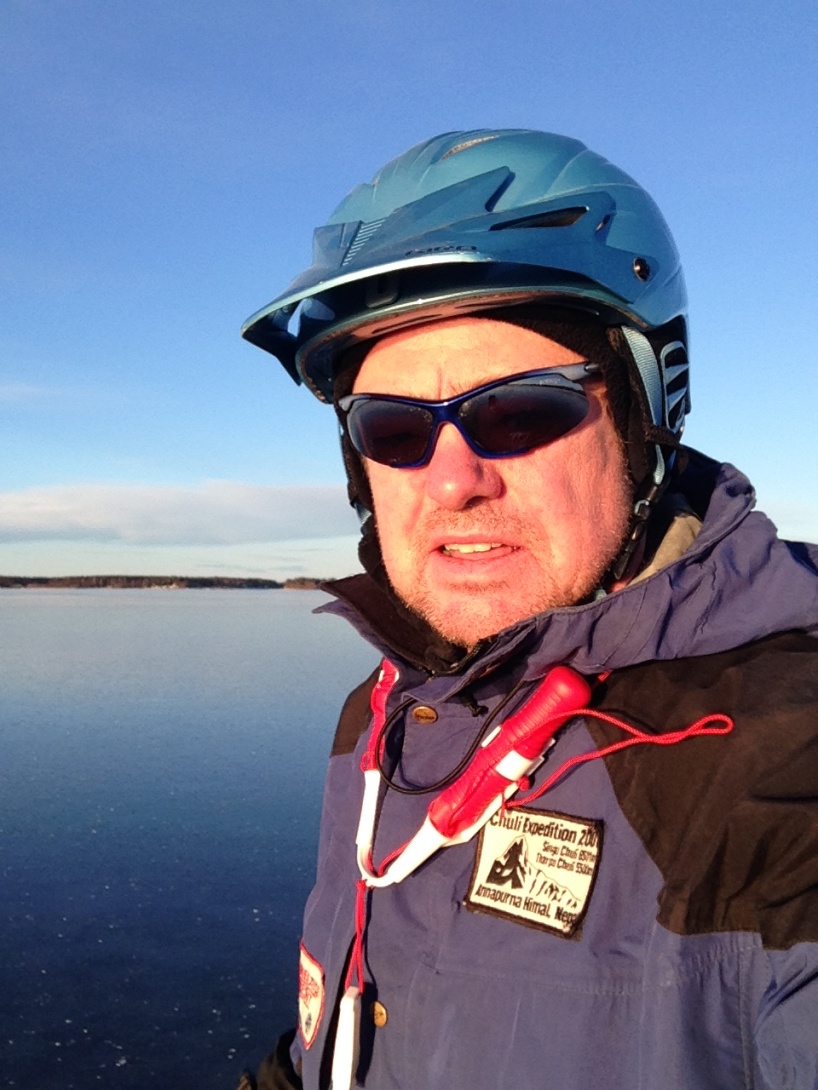
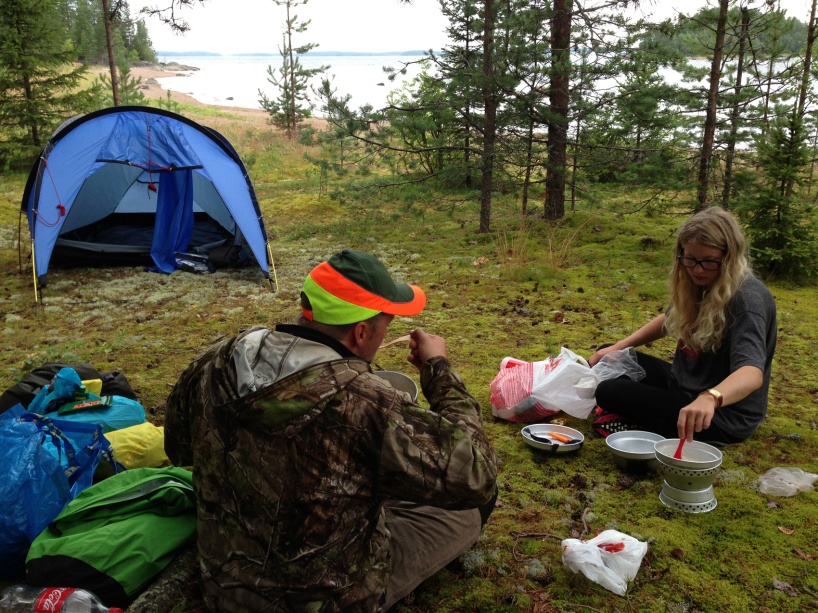
Nedan kan du läsa om friluftsliv under de sju årstiderna

1. Gnistrande våren
Från miiten - sena maj till midsommar infaller den Gnistrande våren i Swedish Lapland, då vintern tappar sitt grepp och växtligheten återkommer. De sista is och snöfläckarna smälter bort, och nu har definitivt ljuset vunnit över vinterns mörker och vårnätterna blir bara ljusare och ljusare tills vinterns mörker är helt borta.
I Kustlandskapet till Bottenviken smälter nu den sista snön snabbt bort merdan isen kan ligga kvar i vikarna innan den börjar brytas upp och smälta i solljuset och öppna upp vattenytor för de första vårfåglarna såsom sångsvan, knipor, skar och änder. Sälar kan nu påträfas på islak ute till havs.
At the coast of Swedish Lapland the last snow fields melt away, and the sea ice breaks up and melts away, open up waters for the returning seabirds, while the seals rest on the last icefloes at sea.
I skogen porlar bäckarna och ljuder ikapp med vårfåglarna ljudkör där hanar kämpar om att attrahera honor och hålla konkurrenter borta. Naturen ändrar snabbt fär grån vit till en brun övergång innan grönskan blommar ut med lövsprickning och vårblomster. Redan till midsommar har naturen blivit en stor barknkammare.
Våren är en fantastisk tid för Friluftsliv - dels att bara vara i den grönskande naturen och ta in den friska vårlukten, att vara ute och lyssna på fågelkören, eta orkideér såsom den ståtliga Gukuskon (Cypripedium calceolus) och den delikata rosa Nornan (Calypso bulbosa) som gömmer sig på i djupa skogen. Friluftsliv till havs är mer problematisk då isarna inte längre bär, men paddling bland isflak är en spännande upplevelse.
I älvarna forsar vårfloden som är en härlig utmning för de erfarna paddlarna, men inget för nybörjaren.
Under denna härliga tid erbjuder Guide Natura dig att vandra med en biolog, läs mer här>>
Vi möter vårfåglarna på Renön där du får medverka i ett forskningsprojekt om rödvoinetrastens dialekter läs mer här>>
Följ med på en vandring i Rosfors ekopark och möta skogens vårfåglar och den spirande grönskan i Lustgårdens naturreservat, Läs mer här>>
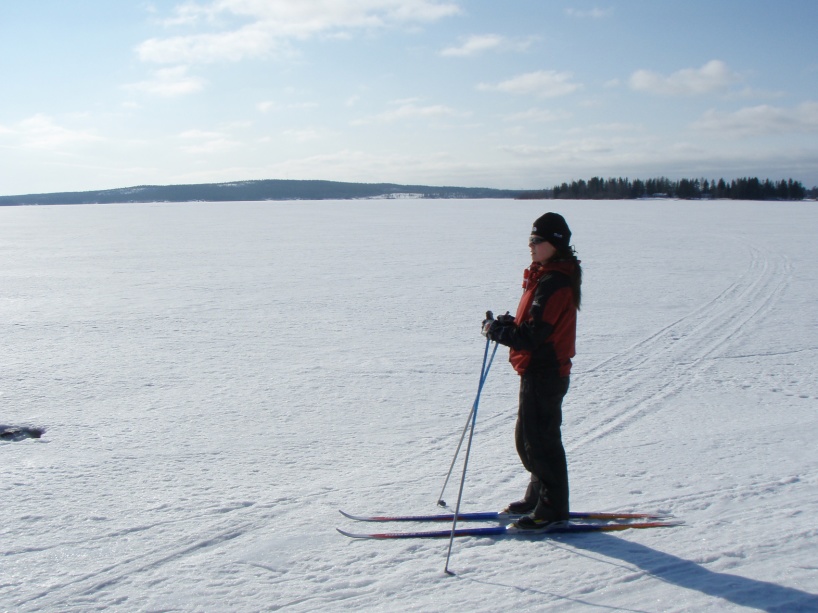
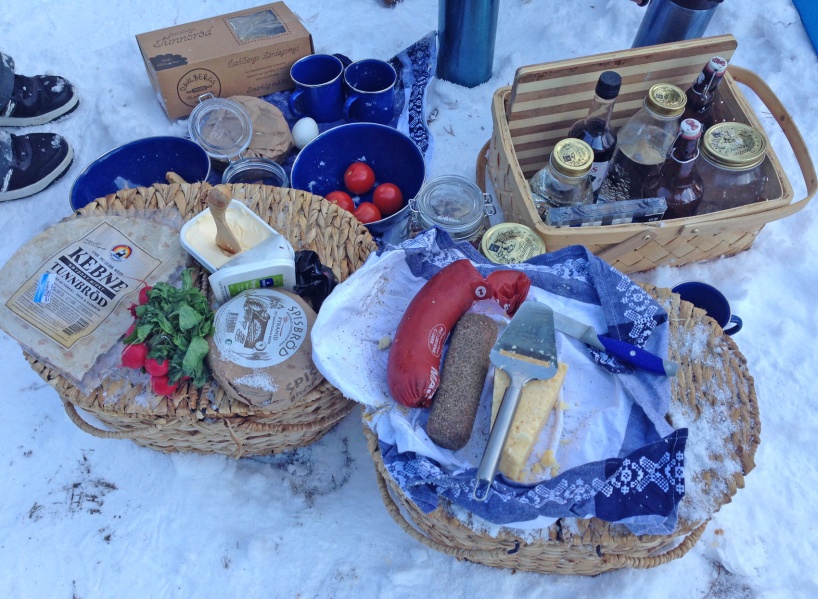

2. Ljusa sommaren
The Bright Summer lasts from Midsummer to mid-July. In our area, just 130 km south from the Polar circle, at midnight the sun just shortly dips below the horizon. This gives us a midnight sun experience with magic bright nights.
Now the summer is in its highest greening with nature expoding with growh in the long bright days, giving plants a special northern flavour. After midsummer insects take advantage of the fourishing flowers creating optimal conditions for rising young birds that together with newborn animals start to explore their new life.
In the mountains a calm period occurs, where the last snow quickly melts away and plants and flowers florish in the long bright days. Reindeers enjoy the insect free period and the newly grown fresh herbs.
This is the time to experience the bright nights and be spellbound by the northern silence of the bright summer.
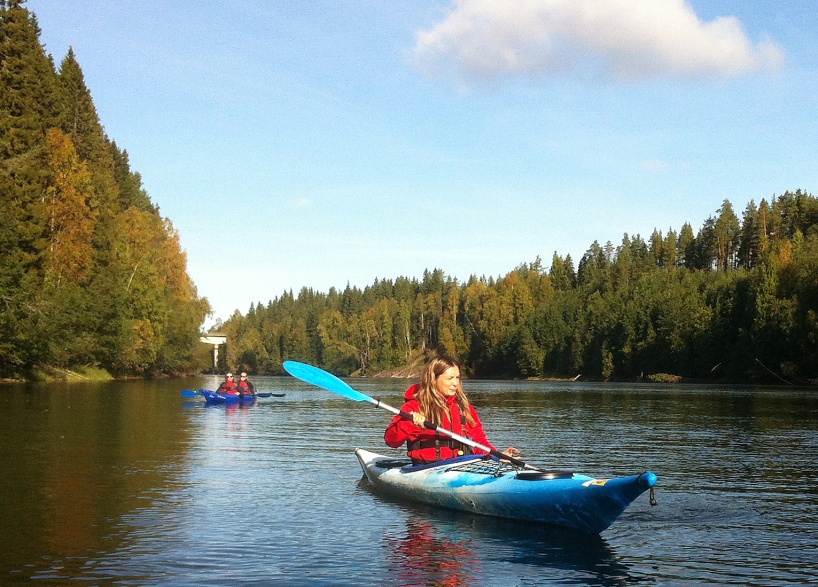
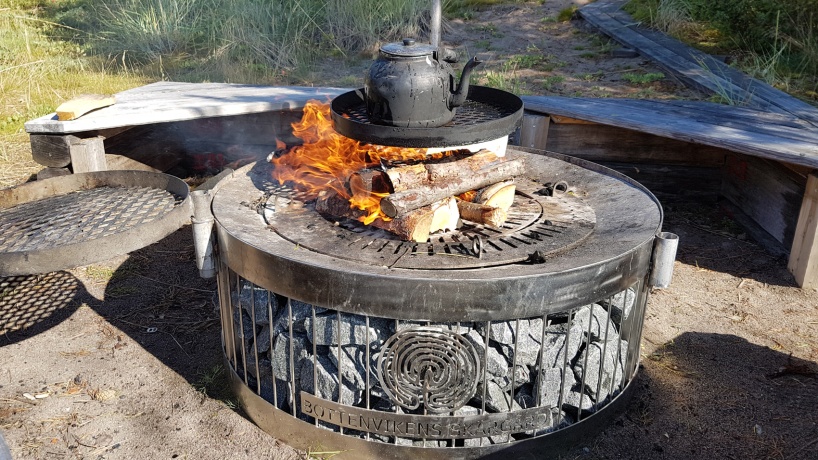

3. Mörknande sommarn
From mid-July, the evenings get darker and from August we start to sense the approaching darkening winter nights when the first stars appear in the darkening night sky.
In the Dusky Summer om mid July to the end of August, nature has become silent except for the begging calls of the now grown up nestlings born earlier in the summer. The flower flourish and the first wild berries ripe full of vitamines, minerals and antioxidants, grown under the bright northern sunlight. Our northern berries such as the yellow cloudberries (hjortron) and the by Carl von Linné loved arctic bramble (åkerbär) (Rubus arcticus) give us a sensational taste of Swedish Lapland.
The summer days are at warmest, and the sea, lakes and rivers are now inviting for swimming, and relaxing paddling. It is a good time to experience the interconnectedness with the more then human world and discover the restoring power of Friluftsliv.


4. Färgrika hösten
From end of August troughout September, beginning in the north and in the mountains, nature takes farwell of the summer, and the first leaves change color while the air becomes crispy fresh, and the first frost night appears.
The first migratory birds head south, with the migration peaking at end of September - beginning of October.
Insects dissapear and berries become ripe and musrooms appear everywhere. At the coast of Swedish Lapland, September is a great period for harvesting nature, collecting berries, musrooms and herbs, or going hunting, or just absorbe the colorfulness of the season.
Now flowers transform into seeds and over-wintering plants accumulate nutrition for the winter. The green chlorophyll of the leaves are absorbed and give way for the underlying bright colors of the fall. It´is the colourful “Ruska” time, as they say in Finland.
The nights start to get really dark, and nn the night sky we can now enjoy bright stars and planets, and the moon reflecting in the sea. Clear nights we can also enjoy the first dancing norther lights (Aurora borealis) of the season without the freezing cold of the winter.
It is a great time for hiking in forets or in the mountainsor paddling in the sea, and exitely even in the darkness of the night in the hunt for the northern light.

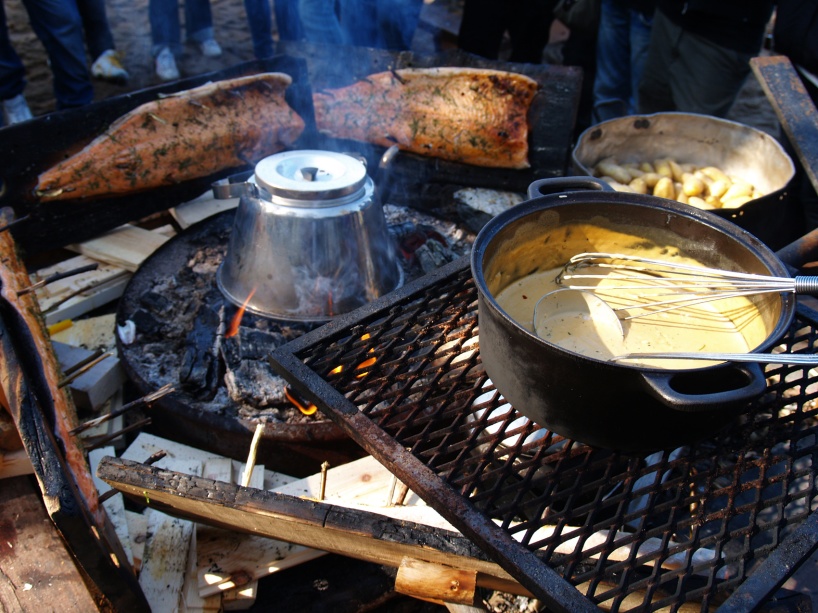

5. Dunkla hösten
Mid October marks the beginning of the Dark Fall, the leaves have fallen of the trees and the days have become significant shorter. This time of clear crispy days and contrasting stormy rainy days’, invite to unusual experiences until the first snow falls in late November or beginning December.
Nature has become screaming silent, the visiting summer birds have left for warmer areas, insects have prepared themselves to survive the winter, and only winter-green plants remain us of the green summer. The storms of the fall have ripped of the last leaves from the trees, and the cold fresh air and frozty nights forecast the first snowfalls. Now is the time for forest hiking and discovering the exciting cryptogams, mosses and lichens that have been hidden by the higher plants of the summer, or frost paddling when the first rime covers the reed and water surface. In shallow bays pikes are absorbing the last sun rays and the whooper swans are gathering in big groups in the still open sea. The common merganser gathers into enormous armada´s of thousand birds fishing for the whitefish European cisco or Vendance (siklöja) (Coregonus albula). The merganses compete with fishing boats, who harvest the red gold of the sea, the vendance roe of the Swedish Bothnia Bay area, a PDO certified delicacy branded as “Kalix löjrom” – a prime taste of Swedish Lapland. Dark fall is also a high season for the Northern light, that can be photographed mirroring in the calm water of the sea.
At the end of the season the see frezes and invite to great scating, while in the muntain area the new snow invite skieers as early as end of October or beginning of November.


6. Mörka vintern
The Dark Fall is transforming into the Dark Winter as the snow starts to cover the landscape and the days become shorter, and the cold takes a grip on the landscape, remaining us of our northern arctic latitude.
From the beginning of December to the middle of February the few light hours in the middle of the day are, however, a sparkling colorful experience, with the dusky light exploding in pink, purple and red. Futher north, above the polar circle, complete darkness or just an hour of daylight gives a real polar experience. When the daylight after a short visit disappears, other lightning takes over. Sparkling starlight free from urban light pollution, midday moonlight and the greenish light of the northern light – Aurora borealis – lighting up the snow-covered landscape and frozen sea.
On Nordic cross-country skates, we explore the frozen sea in the dusky daylight and evening moonlight. At the afternoon dark night light, we take skis or snowshoes on a tour with headlamps through the winter forest. To sit around an open fire during a cold winter night, drinking coffee from the open fire and listening to the silent sounds of the artic night is an experience few people granted.
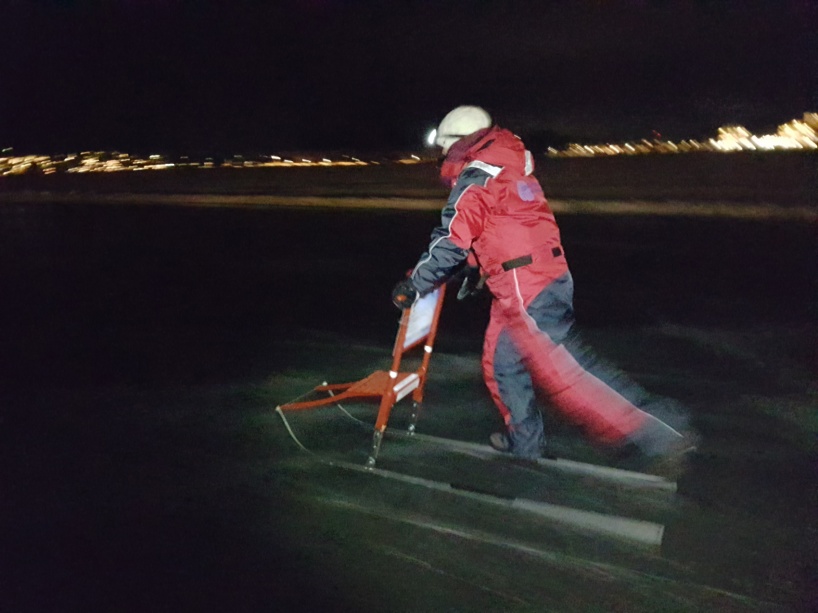
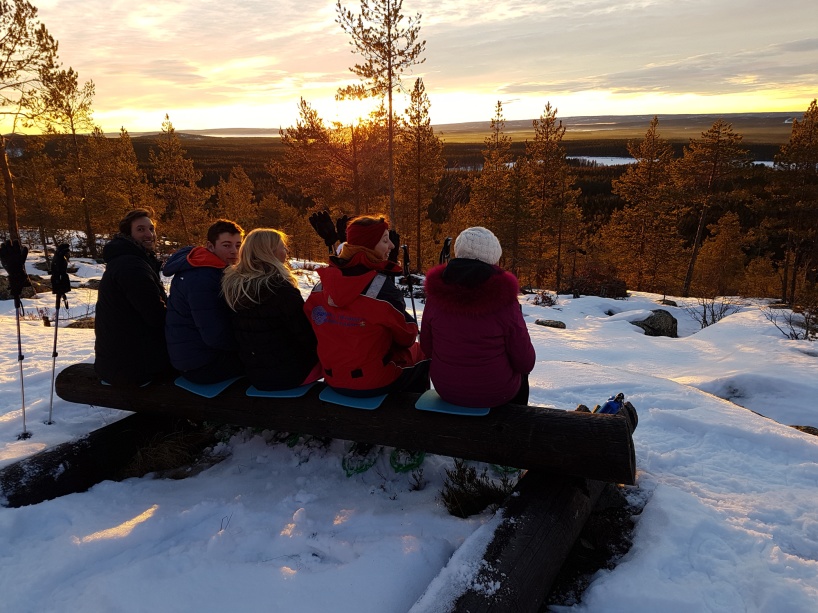

7. Ljusa vintern
From the beginning of March, the light is returning and the days become longer and warmer, the Bright Winter has arrived. The sunrays are warm, and snow melting begins at daytime, forming icicles and dripping from roofs. In the forest and on the sea, the snow is still deep and inviting for cross-country skiing and snow-shoe hiking or snowmobile tours on the sea. Later in April with warm days and cold night a hard snow crust form perfect conditions for skating on skis. The first migratory birds arrive and join the residential birds in the birdsong concert. On ski or snowshoe tracking tours you can explore the activities of the wildlife in the forests and on the sea ice, or paddle the first open waters between the ice floes.
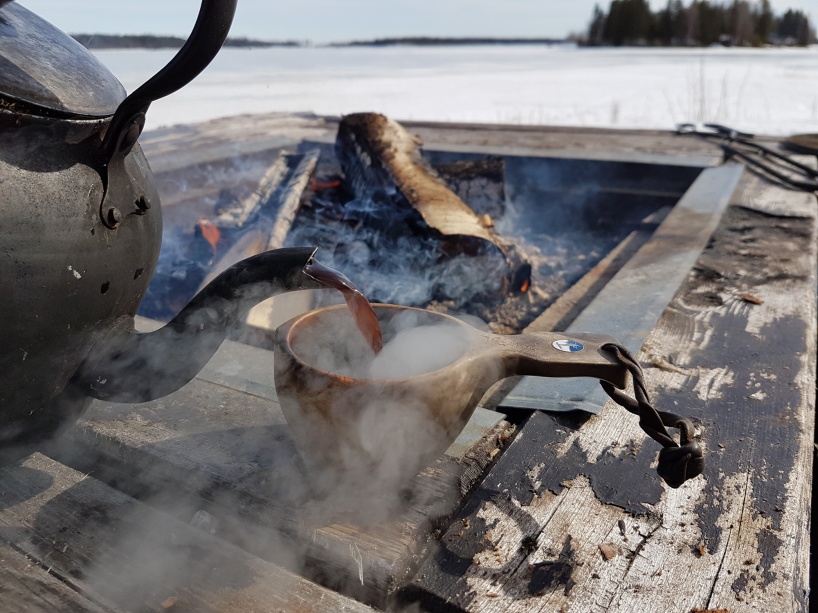
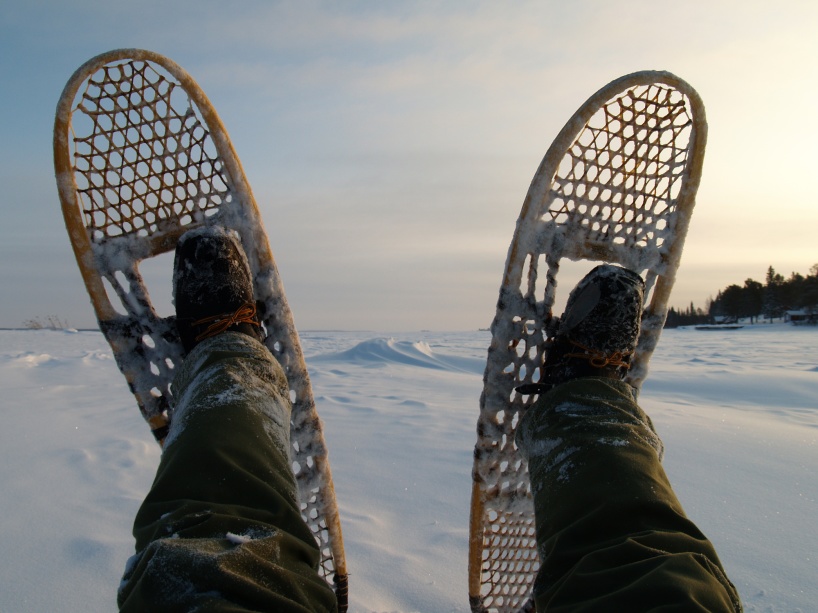
Postadress: Lövgrundsvägen 93, 94141 Piteå, Sweden:
Kontakt: Tel. (+46) 076-1359111, guidenatura@gmail.com
Följ oss på Facebook>> och Instagram>>
Besöksadress:
Studio Guide Natura, Renön, Piteå

